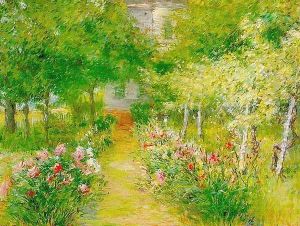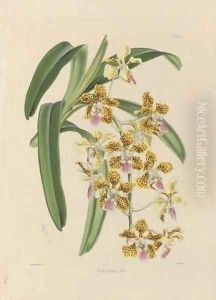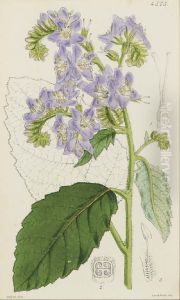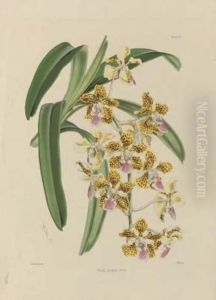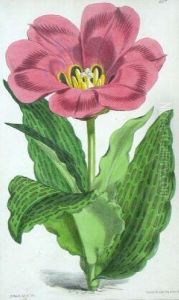Walter Fitch Paintings
Walter Hood Fitch was a renowned botanical artist known for his detailed and vibrant illustrations of plants. Born on February 28, 1817, in Glasgow, Scotland, Fitch's artistic talents were evident from a young age. Despite the lack of formal training in botany or art in his early years, his keen observation skills and natural talent for drawing propelled him into the world of botanical illustration. Fitch's work came to prominence in the mid-19th century, a time when interest in botany and plant collecting was soaring, fueled by the discoveries of new species in exotic locations by explorers and botanists.
Fitch's career took a significant turn when he began working for William Jackson Hooker, the director of the Royal Botanic Gardens, Kew, and one of the most influential botanists of the time. Fitch's collaboration with Hooker, which started in the 1830s, led to his contributions to several of Hooker's publications, including the monumental 'Curtis's Botanical Magazine,' one of the oldest and most esteemed botanical periodicals. Fitch's illustrations were celebrated for their accuracy, detail, and beauty, making significant contributions to the field of botany by providing precise visual records of plant species.
Over his career, Walter Fitch produced more than 10,000 botanical illustrations, making him one of the most prolific botanical artists of the 19th century. His work is characterized by its meticulous detail, vibrant colors, and the ability to convey the beauty and diversity of plant life. Fitch's illustrations remain valuable resources for botanists and are highly regarded in the art world for their aesthetic quality.
Walter Fitch's contributions to botanical art and science were recognized in his time, and his legacy continues to be celebrated today. His illustrations have been included in numerous publications and are held in collections around the world, including the Royal Botanic Gardens, Kew, and the British Museum. Fitch passed away on September 14, 1892, leaving behind a body of work that continues to inspire and inform both scientists and artists alike. His dedication to botanical illustration helped to elevate the discipline to an art form, bridging the gap between science and art in a way that few others have managed.
